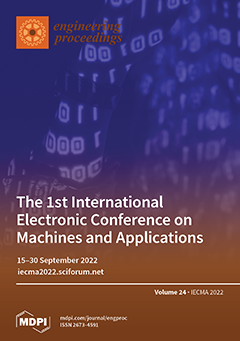Eng. Proc., 2022, IECMA 2022
The 1st International Electronic Conference on Machines and Applications
Online | 15–30 September 2022
Volume Editors:
Giuseppe Carbone, Università della Calabria, Italy
Hai Wang, Murdoch University, Australia
Ibrahim Tansel, Florida International University, USA
Dan Zhang, York University, Canada
Alireza Modir, Florida International University, USA
Antonio J. Marques Cardoso, University of Beira Interior, Portugal
Davide Astolfi, University of Perugia, Italy
- Issues are regarded as officially published after their release is announced to the table of contents alert mailing list.
- You may sign up for e-mail alerts to receive table of contents of newly released issues.
- PDF is the official format for papers published in both, html and pdf forms. To view the papers in pdf format, click on the "PDF Full-text" link, and use the free Adobe Reader to open them.




